Since ancient times, Uzbeks have been able to surprise with their rich culture. This was manifested in everything: in culinary delights, home decoration, folk traditions and, of course, in clothes. National outfits and hats have become an integral part of everyday life. What can we say about the Uzbek skullcap! After all, this is not just a national headdress, it is a sacred symbol, part of Uzbek culture, a head ornament that can tell about its owner.
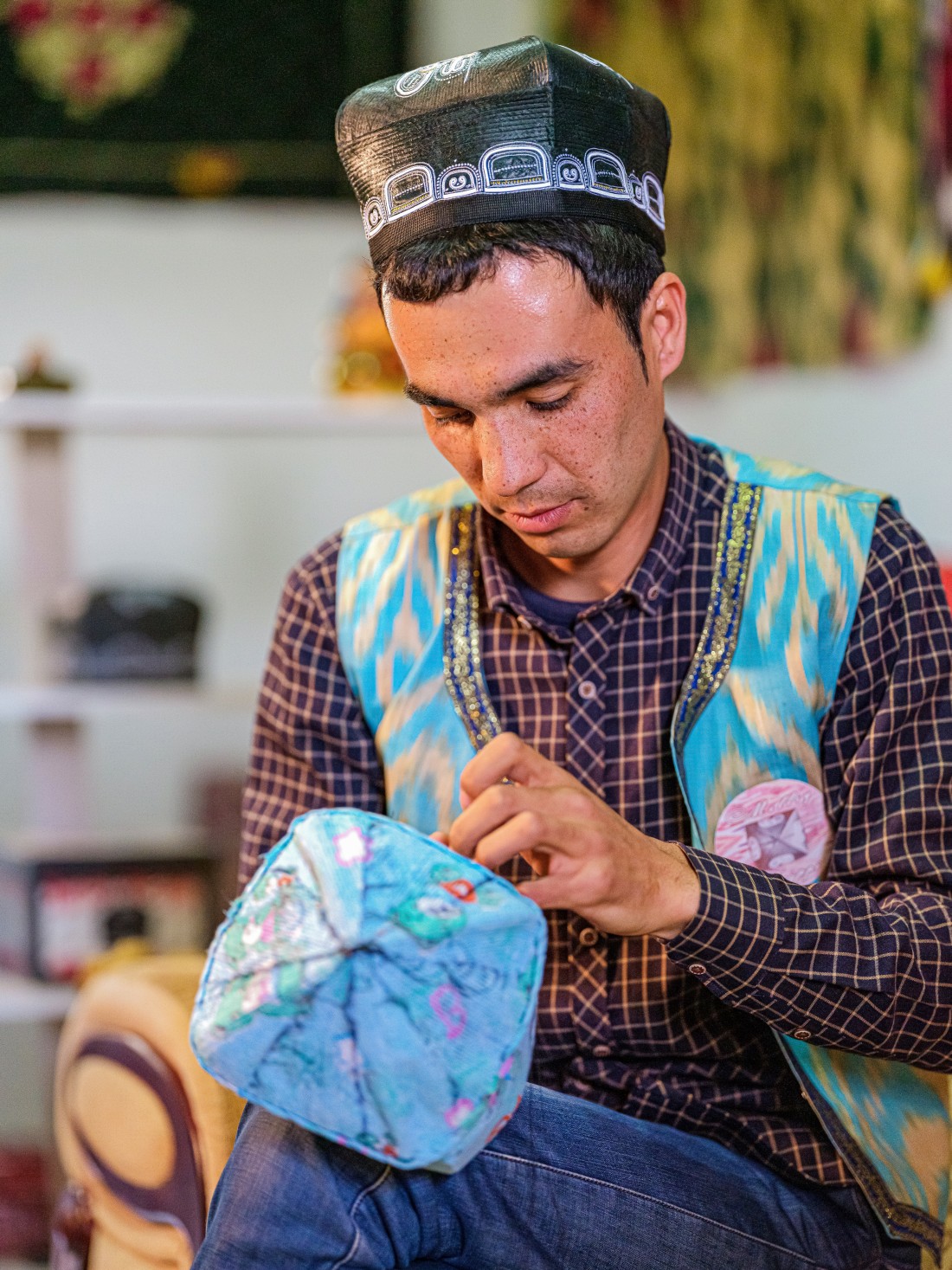
The word "skullcap" was formed from the Turkic "tube", which means "top". Skullcaps are worn by almost everyone, from young to old: old people, men, women, girls, boys and even babies, but elderly women do not wear skullcaps. Each region of Uzbekistan is distinguished by its own branded skullcap.
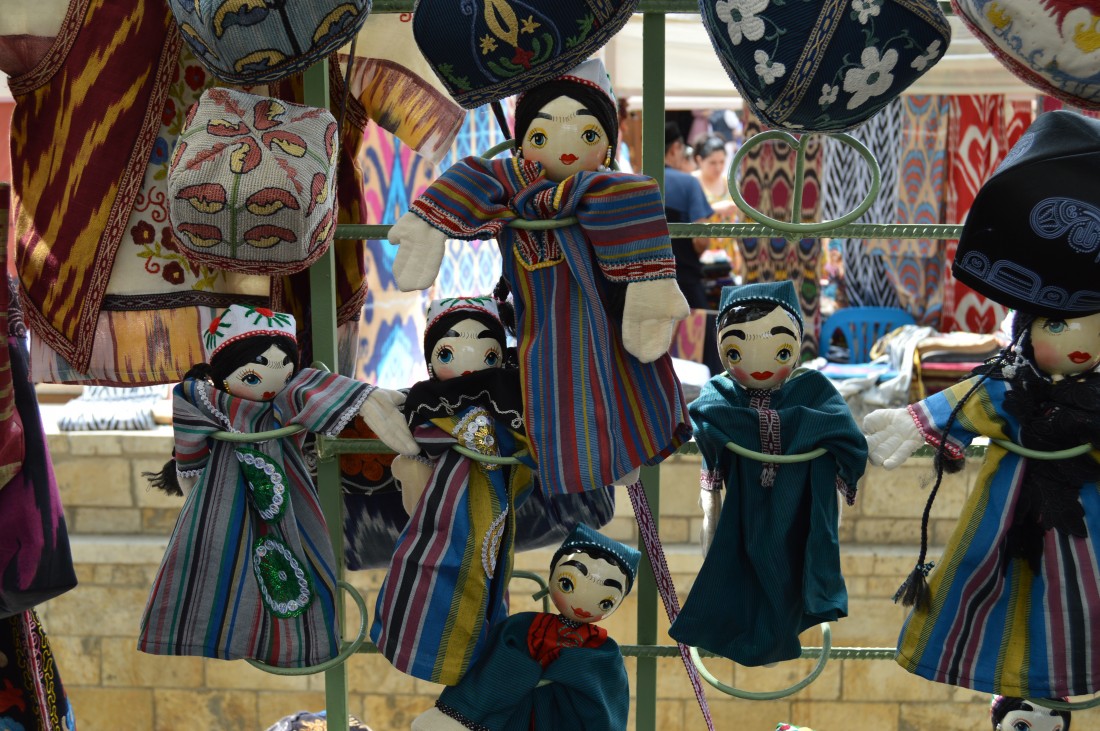
The most popular skullcaps are:
- Bukhara gold embroidery – patterns embroidered on the braid with gold and silver thread indicate the high status of the owner.
- Andijan (women's) skullcap – the skullcap is embroidered on a dense white base with crosses. Fruits and symbolic signs are often depicted.
- Tashkent (women's) skullcap – bright feathers of birds as protection from the evil eye. They are made of burgundy, dark green or dark blue materials, embroidered with beads of light tones.Shakhrisabz (men's) skullcap – "Iroki" or "Iraqi". A bright skullcap with floral ornaments symbolize the beauty and generosity of nature.
- Boysun (men's) skullcap is an unusual color combination of a skullcap. Each color has its own sacred meaning, for example, mustard yellow is the flower of cotton, white is the cotton itself.
- Karakalpak (men's) is a round–shaped skullcap, which is popularly called the "spit of the queen".
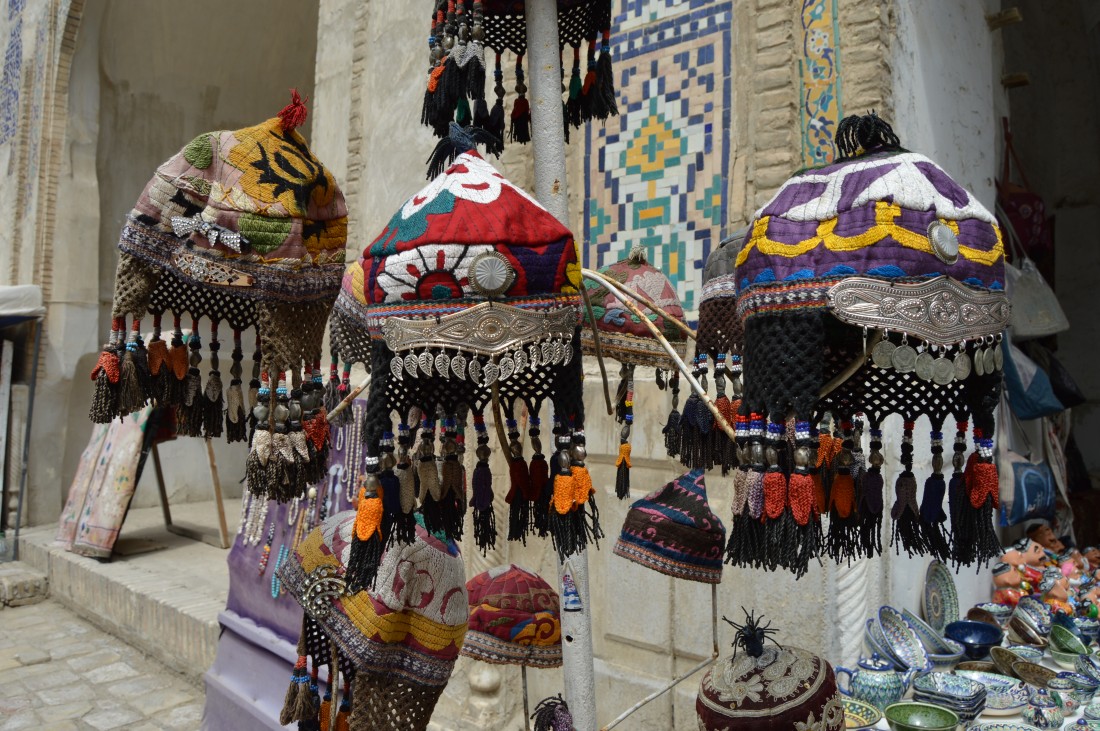 Every skullcap maker invests a sacred meaning. Patterns, color, shape have their own meaning. The Chust men's skullcap occupies an honorable place in the collection of Uzbek skullcaps. Every decent Uzbek must have such a headdress in his wardrobe. The birthplace of such skullcaps is the city of Chust in the Fergana Valley. It is there that whole families are making skullcaps, passing on the secrets of production from generation to generation.
Every skullcap maker invests a sacred meaning. Patterns, color, shape have their own meaning. The Chust men's skullcap occupies an honorable place in the collection of Uzbek skullcaps. Every decent Uzbek must have such a headdress in his wardrobe. The birthplace of such skullcaps is the city of Chust in the Fergana Valley. It is there that whole families are making skullcaps, passing on the secrets of production from generation to generation. 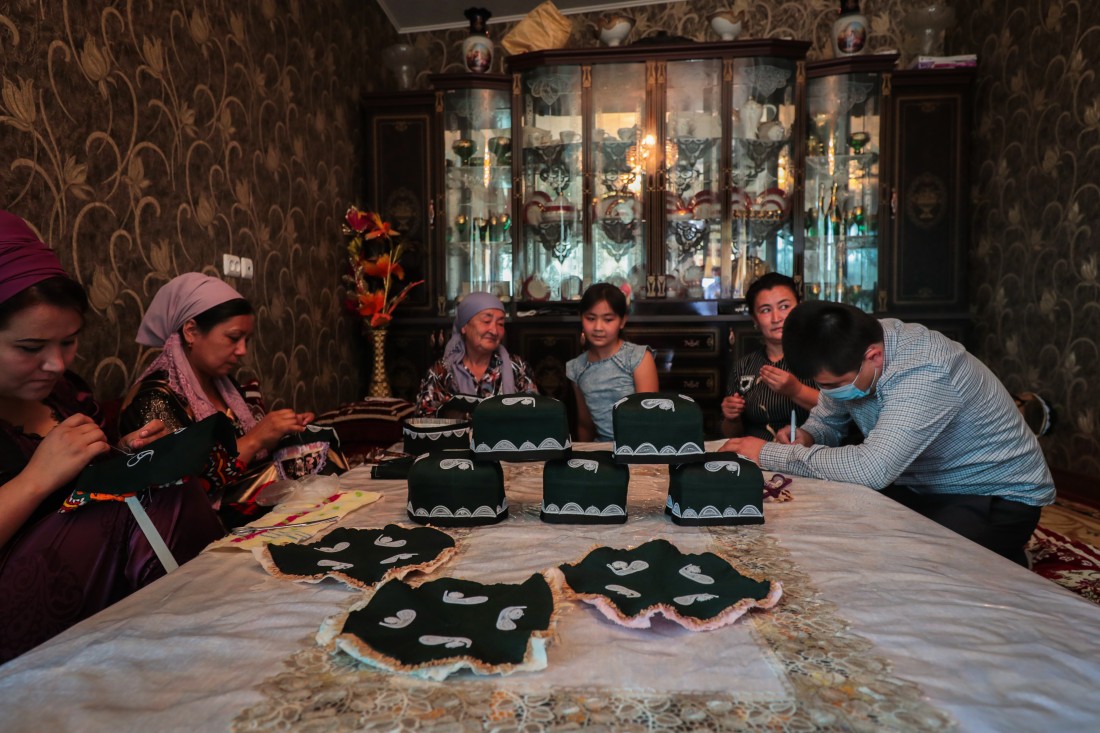 Chust skullcaps have their own distinctive features, which have a sacred meaning:
Chust skullcaps have their own distinctive features, which have a sacred meaning:
- Such skullcaps are dark in color. The rich dark color symbolizes space and darkness.
- Ornaments on the skullcap are embroidered with white threads. White threads symbolize the cycle and the sign of the sun.
- On the skullcap, you can see the ornament of capsicum – "kalampur". Such an ornament is considered a symbol of life, family happiness and a talisman against the evil eye.
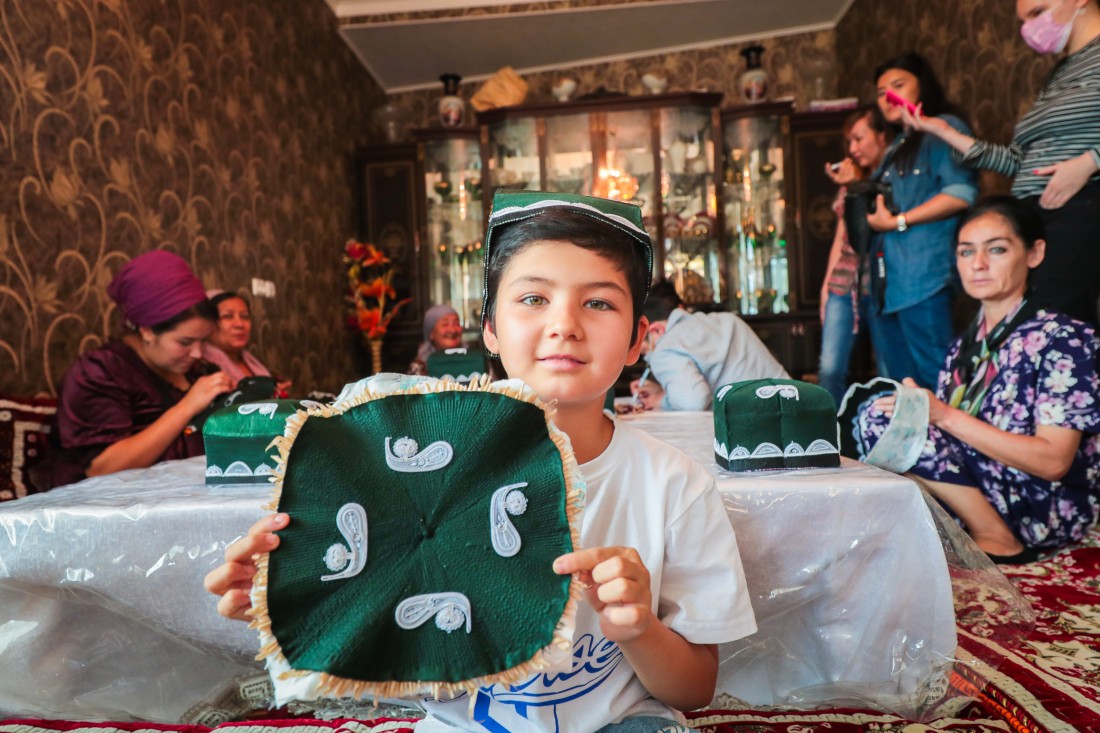
- The skullcap has pronounced four sides. Each side is like protection from evil spirits from every side of the world.
- There are 16 arches around the skullcap. Each arch symbolizes the cyclicity of life and death. Every life is followed by death, and death, therefore, by life. In addition, such an arrangement promises wealth and vitality.
- Inside the arches, through one, there are ram's horns – they mean strength and courage.
- Chust skullcaps are convenient to store. if you add them up, then each part has its own name – tepa, kizak, zhiyak.
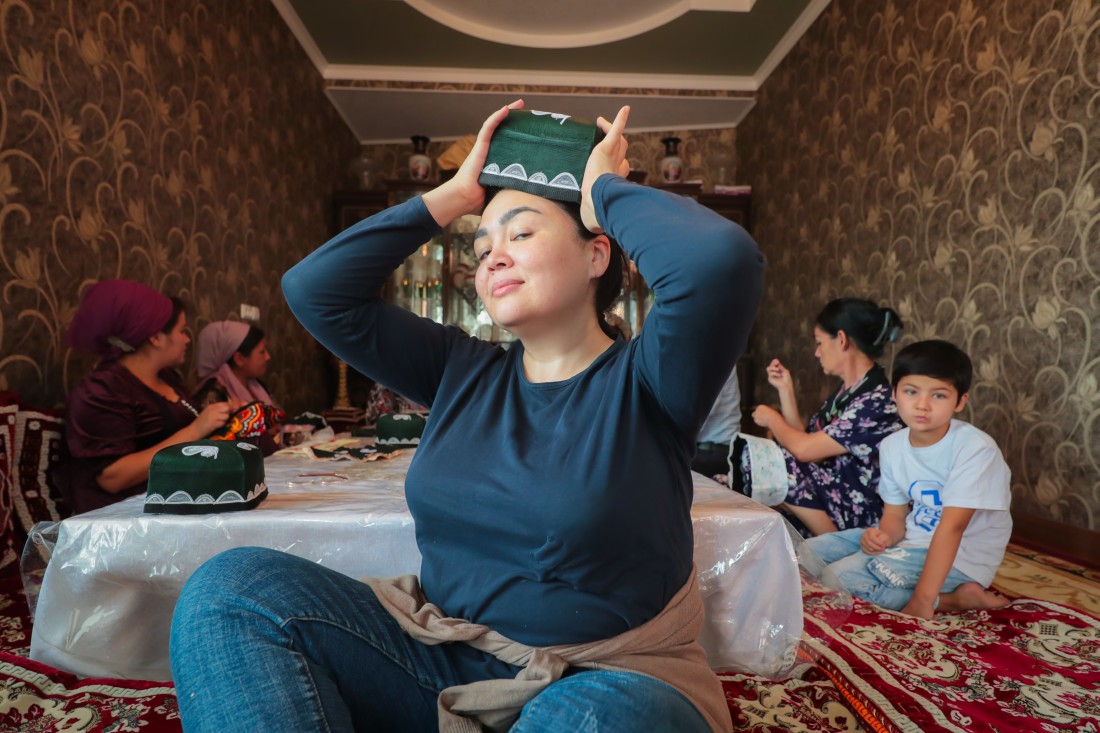
- Along with Chust skullcaps, Margilan skullcaps are common in Uzbekistan. They are also black with white ornaments, but unlike the Chust ones, these skullcaps depict a sweet almond flower, and they have a slightly different shape.


 Every skullcap maker invests a sacred meaning. Patterns, color, shape have their own meaning. The Chust men's skullcap occupies an honorable place in the collection of Uzbek skullcaps. Every decent Uzbek must have such a headdress in his wardrobe. The birthplace of such skullcaps is the city of Chust in the Fergana Valley. It is there that whole families are making skullcaps, passing on the secrets of production from generation to generation.
Every skullcap maker invests a sacred meaning. Patterns, color, shape have their own meaning. The Chust men's skullcap occupies an honorable place in the collection of Uzbek skullcaps. Every decent Uzbek must have such a headdress in his wardrobe. The birthplace of such skullcaps is the city of Chust in the Fergana Valley. It is there that whole families are making skullcaps, passing on the secrets of production from generation to generation.  Chust skullcaps have their own distinctive features, which have a sacred meaning:
Chust skullcaps have their own distinctive features, which have a sacred meaning:

Comment